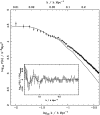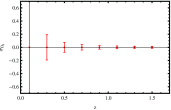Cosmology and fundamental physics with the Euclid satellite
- PMID: 29674941
- PMCID: PMC5897888
- DOI: 10.1007/s41114-017-0010-3
Cosmology and fundamental physics with the Euclid satellite
Abstract
Euclid is a European Space Agency medium-class mission selected for launch in 2020 within the cosmic vision 2015-2025 program. The main goal of Euclid is to understand the origin of the accelerated expansion of the universe. Euclid will explore the expansion history of the universe and the evolution of cosmic structures by measuring shapes and red-shifts of galaxies as well as the distribution of clusters of galaxies over a large fraction of the sky. Although the main driver for Euclid is the nature of dark energy, Euclid science covers a vast range of topics, from cosmology to galaxy evolution to planetary research. In this review we focus on cosmology and fundamental physics, with a strong emphasis on science beyond the current standard models. We discuss five broad topics: dark energy and modified gravity, dark matter, initial conditions, basic assumptions and questions of methodology in the data analysis. This review has been planned and carried out within Euclid's Theory Working Group and is meant to provide a guide to the scientific themes that will underlie the activity of the group during the preparation of the Euclid mission.
Keywords: Cosmology; Dark energy; Galaxy evolution.
Figures































































References
-
- Abazajian K, Switzer ER, Dodelson S, Heitmann K, Habib S. Nonlinear cosmological matter power spectrum with massive neutrinos: the halo model. Phys Rev D. 2005;71:043507. doi: 10.1103/PhysRevD.71.043507. - DOI
-
- Abazajian KN, Acero MA, Agarwalla SK, Aguilar-Arevalo AA, Albright CH et al (2012b) Light sterile neutrinos: a white paper. ArXiv e-prints 1204.5379
-
- Abbott LF, Sikivie P. A cosmological bound on the invisible axion. Phys Lett B. 1983;120:133–136. doi: 10.1016/0370-2693(83)90638-X. - DOI
-
- Abdalla E, Abramo LR, Sodré L, Jr, Wang B. Signature of the interaction between dark energy and dark matter in galaxy clusters. Phys Lett B. 2009;673:107–110. doi: 10.1016/j.physletb.2009.02.008. - DOI
Publication types
LinkOut - more resources
Full Text Sources
Other Literature Sources
Medical
Molecular Biology Databases
